- Home
- Andy McNab
Seven Troop Page 8
Seven Troop Read online
Page 8
To avoid a similar disaster in the UK, the British government turned to the SAS. The CRW had been created, among other things, to be responsible for training every member of the Regiment in counter-terrorism techniques.
An entire squadron was 'on the team' in the UK for six to nine months, on permanent standby. The squadrons rotated, and it was B Squadron's turn. While Seven Troop was over the water, the other three troops would comprise the team. I'd been sent straight for CT training so that while I was mincing around for a month at Brize Norton on my freefall course, I'd also be on standby. It was a national and international responsibility, and they needed every spare bit of manpower they could get their hands on.
It sounded to me like the best of all worlds. I got to do team training, collect my entry skill, and finally to go on operations with my own troop.
18
We were split into two sub-teams, Red and Blue, which meant that two incidents could be covered at once if it was a really bad day. One team was on thirty-minute standby, the other, three hours. There was a signals set-up from Frank's unit, and each had an assault group and a sniper group.
The assaulters were the guys in black who jumped out of helicopters and went in through embassy windows. Depending on the target, they tended to work in four-man teams. One of the assaulters was also the method-of-entry (MOE) man, responsible for taking down any door the team were trying to get through with explosives, or by simply turning the handle. Then there was the MOE heavy brigade. They were the guys who cut through walls using shaped charges, and made sure that everything from window grilles to steel-plated doors didn't get in our way.
Until everything went bang and an attack went in, the most important component of the team were the snipers. They were always in their fire positions so we had eyes on target supplying real-time information. They reported any movement they could see, the exact construction of the window frames, whether there were any covert approaches to the target, so that the lads could have a close recce. The snipers knew exactly the kind of information required because they, too, were trained as assaulters.
The squadron HQ comprised the OC – a major – and the SSM (squadron sergeant major) – a warrant officer – who were responsible for both teams. B Squadron had just got a new OC. Boss L was off to bigger and better things.
Stirling Lines, our camp, was named after the founder of the SAS. It was usually just referred to as the Lines, and had been rebuilt about five years ago. The old camp, Bradbury Lines, consisted of wooden spider huts from the 1950s, long barrack rooms in a star shape joined at the centre by the toilets and washrooms. Now the camp looked more like a university campus, with red-brick buildings, white-framed double-glazing, and no parade ground. It was so un-army. I loved it.
I lined up at the quartermaster's and was issued with my ready bag – a black canvas affair big enough to hold a family car, containing everything an assaulter could ever need. The idea was that you could throw it straight into a vehicle or a heli in a call-out. Ready bags always had to be ready.
First into it was a set of black overalls and Nomex tops and bottoms to go underneath, like pyjamas. Nomex was the fireproof kit racing drivers wore. I was also given an NBC (nuclear, biological and chemical) suit, which would go between the two if we were using dodgy gas that was designed to attack the skin as well as the respiratory system. Next came a respirator and six spare canisters. The Kevlar body armour had two ceramic plates, front and rear, to protect the major organs in the chest area. A thick suede waistcoat to go over the top was festooned with small webbing loops and pockets. And last, but not least, there was a pair of green leather aviators' gloves. They protected your hands, but were thin enough to let you feel the trigger. Everyone loved them.
I was handed a 9mm Browning semi-automatic pistol, and the legendary Heckler & Koch MP5, with an under-slung torch. The torch was zeroed to the weapon. If you were firing from up to about eight metres, the rounds would hit where the beam did. It was great for target acquisition in the dark, but the beam was also powerful enough to penetrate smoke.
I was given half a dozen thirty-round magazines for the MP5 and three for the 9mm, and thick leather mag holders to strap to my legs: 7.62 mags on the left, 9mm on the right. They didn't go on your legs so that you could walk around like Wyatt Earp: it was because your belt was under your body armour, so nothing was accessible until it came off.
The webbing hooks in the waistcoat were for grenades, flash bangs and/or gas canisters. Flash bangs – not stun grenades, as the media like to call them – came in different formats. Bang, flash or scream: all of them fucked people up in their own special way. Some just gave off crushing bangs that made your body shudder – as well as the enemy's. Some gave bangs and a brilliant flash that caused temporary blindness. Some emitted high-pitched deafening screams. About the size of an aerosol can with a handle down the side, they had a rubber skin that contained three levels of small alloy canisters. When the pin was pulled and the flash bang was thrown, the small charge inside kicked off and sprayed the room with whatever special brand of fuck-off stuff was inside.
On the left-hand side of the vest there was a pouch with a bit of strapping to hold the next bit of issue, a fireman's axe – very handy if the MOE guy fucked up. High on the left shoulder a survival knife was positioned so you could grab it easily with your right hand, even with a weapon butt in the shoulder. It was not so much for fighting with, more for cutting away the abseil rope if you got caught up. It was added to the kit after the embassy siege when a couple of lads got tangled and couldn't cut themselves free. They were badly burnt by fires set off by flash bangs, which billowed from the windows below.
As soon as we had our ready bags we went to CRW and started training. CRW also evaluated new equipment and techniques for the CT team. They sourced different training areas and buildings. If they could get their hands on a 747 jet they would, and we'd fly off and meet it wherever it was. They organized trips to the London Underground, ports and airports, and assessed major venues where heads of state were likely to gather. They were big believers in the Seven Ps: Prior Planning and Preparation Prevents Piss Poor Performance. A large two-storey building with a flat roof that was used as a stronghold stood within the training area. It got stormed about six times a week.
The Regiment used Agusta 109 helicopters. Some were captured in the Falklands; others were bought once the head shed saw how good they were. They were perfect for moving fast in built-up areas and delivering assault groups to the top of buildings or wherever they needed to be. They were also in wide use by civilians, so offered concealment.
The idea that particular night was to practise a new technique for inserting an assault team onto the top of a building fast and in darkness. I'd only abseiled a couple of times before on adventure training, and never from a helicopter. Back in the Lines, the lads had shown us how to rig up the seat harness, which was part of our ready bags, and the metal figure-of-eight the rope went through so you could control your descent. And that was it. Again, it was all about barrel time: just get on with it.
The normal abseiling technique from an Agusta was to stand on the skid, leaning out on a rope secured to a D-ring on the floor. It was tried and tested, but the disadvantage for the pilot was having guys hanging out as the helicopter swooped into position. The new method we were going to try was to stay in the aircraft so the pilot could fly faster and manoeuvre round targets without worrying about guys falling off the sides.
We all knelt inside, rigged up and ready to go, with only three metres of slack rope, secured to a D-ring, coiled in our hands. When the command came to jump, we did exactly that. There was three metres of freefall before the rope bit on the figure of eight, and then we abseiled normally. The only thing to make absolutely sure of, the instructors said, was that you really had a grip of the rope in your right hand. That was the free one, the one that was going to do the braking.
It all worked fine, until one of us had a drama and lost his grip.
He hit the roof like a runaway sack of shit, and his ankle cracked so loudly I could hear it from ten metres away.
As he lay there waiting to be cas-evac'd off, the heli's rotors blasting us with downwash, Snapper walked over, lit two fags and passed one down. 'You'll have to work on that last bit, laaaad.' He winked. 'Only four point five for styyyyyle.'
19
We were taken to what used to be called the Killing House. I'd heard hundreds of rounds being fired in it while I was on Selection, and now I was actually going in to have a cabby (a go) myself.
'We have to call it the CQB building noooow.' Snapper wasn't impressed. 'Things are starting to get all politically correct. I blame Maggieeee!'
Whatever it was called, the single-storey building in the corner of the Lines was designed for us to train in hostage rescue with live ammunition, and make entry at any level – anything from a four-man assault group to a complete team.
The smell of lead and cordite clung to the walls. After a while you could taste it at the back of your throat. There were extractor fans, but they couldn't keep up with the number of rounds fired – more than the rest of the army put together.
Snapper had just been posted to CRW, but still thought he was with the squadron. He hung around, and generally joined in with the guys, honking about everything and anything, like any soldier in any army on the planet.
Even with all the lights on, the rooms in the CQB (close-quarter battle) house were still gloomy. Some rooms had bullet-proof glass with little portholes so people could look in from outside or video us.
Live ammunition could be used because the walls were covered with overlapping sheets of conveyor-belt rubber. Behind them there was a gap of about three inches, then thick steel plate. The rounds would go through the rubber, hit the steel, and if they ricocheted it would only be back against the rubber. It was a brilliant system. You could ram an MP5 right against the rubber, blat away on auto, and not a single round came back.
We were separated into four-man groups. I was with Hillbilly, one of the lads I'd met when Snapper was doing his anti-mason hunt. He was in Boat Troop.
He gave me a nod. 'How you getting on? Seen anything of Nish?'
'Nah, they've been in the training area since we got here.'
Snapper appeared. 'You, you and you – let's go.'
Hillbilly, another lad and I fell in behind him.
Snapper looked and sounded as mad as usual. 'OK, laaaads, let's smoke 'em and doke 'em!'
I'd thought he was going to do his CRW training thing, not be the team commander.
I was number three on the door. I looked at Hillbilly. 'What do you want me to do?'
No one had given me any instruction about four-man room combat.
'Just get through the fucking door. Go where we're not. If Snapper and me are to the right, you go left. Just get in where you can. If you see an X-ray, drop him. Simple as that. Just get on with it, mate. No time for mincing.'
I loaded the MP5 with thirty rounds, pulled the cocking handle to make the weapon ready and put the safety catch on. I let the weapon drop in front of me to hang from its chest sling and pulled out the 9mm, cocked it, applied the safety, and pushed it back into the thigh holster.
We were on the left of the door. Snapper was number one and on the hinges. Hillbilly was so close behind he could have got him pregnant. I was the same distance behind him. It had to be this way so we'd get through the door almost as one.
Over the next decade I'd get used to the deafening thuds from other rooms and the smell of lead and cordite.
The number four, the MOE guy, was on the handle side of the door.
Snapper must have heard Hillbilly. He grabbed hold of my arm and dragged me close enough to shout into my ear through the respirator and above the din: 'It's all about barrel time, Andy lad. Time on the weapon, that's what it's about. Don't you fucking worry about all the walk-through talk-throughs. I'll soon tell you if you fuck up.' He let go and I got back on the door, but then he came back and dragged me towards him again. 'Or Mr Nine Millimetre will. Awww.'
Snapper got back on the door with the butt of his MP5 in the shoulder, weapon up, facing where the gap would appear as soon as the door opened.
Hillbilly had his weapon in the shoulder but was pointing it down at the floor. I saw his thumb click his safety down onto single shot. All the way down would have been automatic. It's all about taking rapid, controlled shots to conserve ammunition.
Snapper had just remembered he was now on CRW. 'We want the fuckers to drop like liquiiiid – no chance of zapping back at us. Double taps to the nuuuut.'
I knew all this anyway. The CQB phase was part of Selection, but not room combat. I knew that in real time the place could be full of X-rays (terrorists) and Yankees (hostages). If you started blatting automatic fire all around, you were going to land up killing the very people you were there to save. You only made head shots. Terrorists were allowed to wear body armour as well, and they could be totally out of it on drugs or adrenalin. I'd heard about Jocks in the First World War charging on, skirts flying and bayonets fixed, sometimes taking six or seven rounds before they understood they were dead.
20
I checked my safety catch, muzzle pointing down. My left shoulder pressed against Hillbilly's back. We waited in silence, but it was a noisy silence. As well as the din of gunfire and shouts I could hear my respirator's rubber diaphragm clicking each time I breathed in, and the breathing itself was amplified; I sounded like a pervert on the phone. That wasn't the only problem with respirators. There was also a strong smell of rubber, and pungent, peppery traces of old CS gas. On top of that, my lenses were steaming up. I was beginning to feel like I was under water.
Snapper shouted, 'Stand by, stand by – goooo!' It was muffled by his respirator, but I got the drift.
Number four pushed open the door and Snapper and Hillbilly disappeared. They'd go as far forward as they could before firing, to leave room for others to come in and join the attack.
As I followed them a split second later, butt in the shoulder, both eyes open, torchlight burning into the gloom, I heard a series of quick double taps to my right.
I couldn't believe my eyes. There were real people in here. Some team members were sitting at tables. One was standing to my half-left, another was sitting on a settee.
I moved to Hillbilly's left. He was firing at a Hun-head between two lads at a table.
I spotted a Hun-head in the far corner, stopped, illuminated the target, gave it a double tap and moved forward. There was hardly any recoil from the weapon.
I double-tapped again, shuffled forward, double-tapped. And again. Finally, I was close enough to see the rounds making holes. That was it. He was dead, and there were no more targets, just guys sitting or standing around me.
We had all stopped firing within seconds of making entry. Snapper screamed through his respirator: 'Clear.'
We covered the number four as he swept from the right, pistol drawn, MP5 dangling over his front, checking behind the settees and in the wardrobes for any hidden X-rays.
A double tap from him into the wardrobe, then another, said there were.
The threat was only considered eliminated when a body went down and wasn't moving any more because it was dead. That was why a target sometimes got zapped by sixteen rounds. You had to fire until you knew the guy was dead. It was dark in the wardrobe and the number four couldn't see the strike marks as he fired the first double tap. So he fired again until he did.
After the embassy, I remembered listening to armchair experts complain about the number of rounds the dead X-rays had in them. 'Why didn't they just shoot him in the leg?' they were saying, or 'Why not kill them with just two rounds? This is overkill.' The people who made those comments were lucky enough never to have had a gun pointed at them.
Snapper pulled off his respirator. 'Too fookin' sloooow!'
I took off mine too. I must have had a big line round my face from the seal, just like the ot
her three.
All the hostages, lads from Mountain Troop, gave Snapper a slagging. They said he'd gone off to the right as he came in, when the main threat, the nearest target to him, was to his left.

 Get Me Out of Here!
Get Me Out of Here!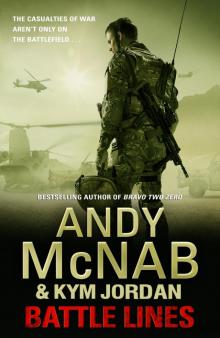 Battle Lines
Battle Lines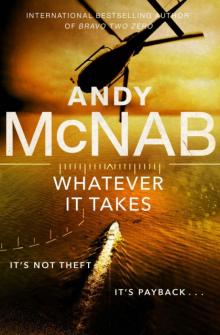 Whatever It Takes
Whatever It Takes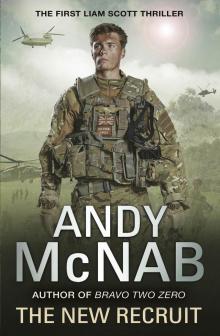 The New Recruit
The New Recruit War Torn
War Torn Brute Force
Brute Force Crossfire
Crossfire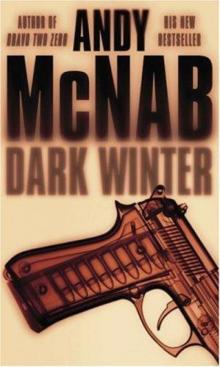 Dark Winter ns-6
Dark Winter ns-6 The Grey Man
The Grey Man Spoken from the Front
Spoken from the Front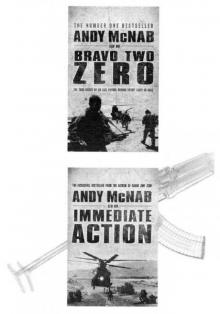 Meltdown
Meltdown Recoil
Recoil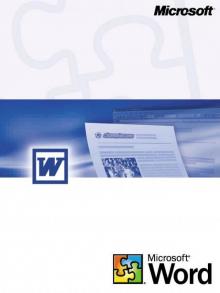 Nick Stone 1 - Remote Control.
Nick Stone 1 - Remote Control.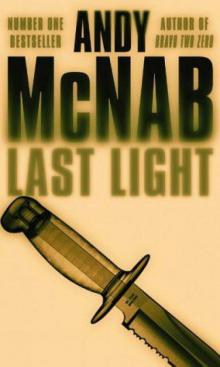 Last Light ns-4
Last Light ns-4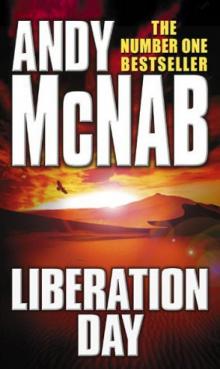 Liberation day
Liberation day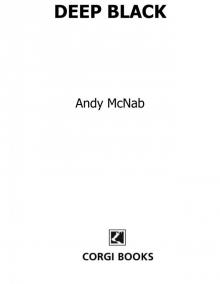 Deep Black
Deep Black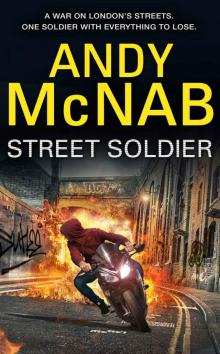 Street Soldier
Street Soldier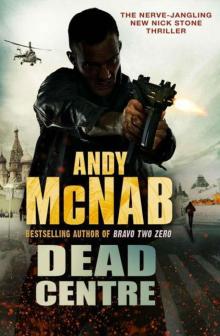 Dead Centre ns-14
Dead Centre ns-14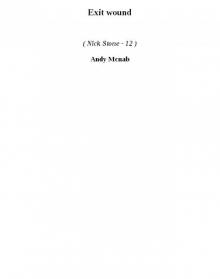 Exit wound ns-12
Exit wound ns-12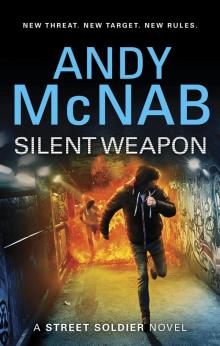 Silent Weapon
Silent Weapon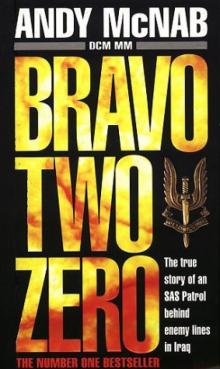 Bravo two zero
Bravo two zero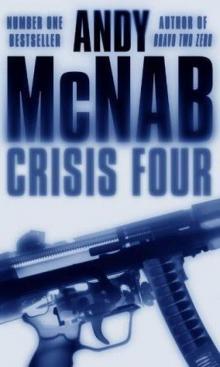 Crisis Four ns-2
Crisis Four ns-2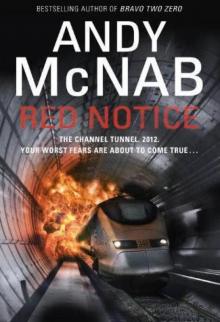 Red Notice
Red Notice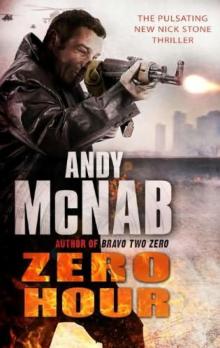 NS13 Zero Hour
NS13 Zero Hour Firewall
Firewall Last Light
Last Light Aggressor
Aggressor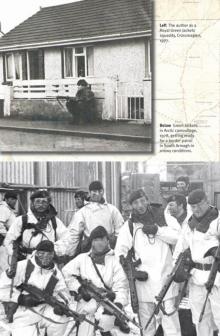 Seven Troop
Seven Troop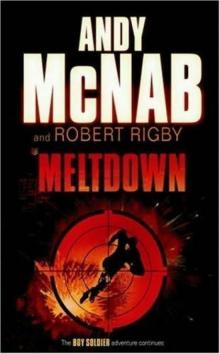 Meltdown bs-4
Meltdown bs-4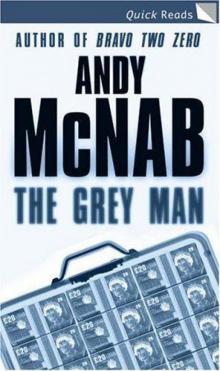 The Grey Man (quick reads)
The Grey Man (quick reads)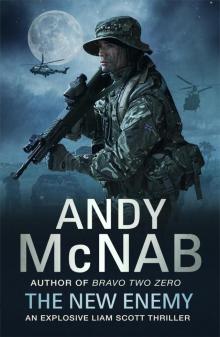 The New Enemy
The New Enemy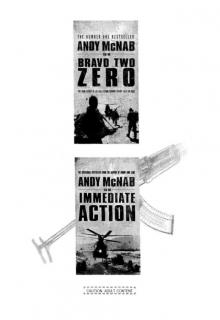 Avenger
Avenger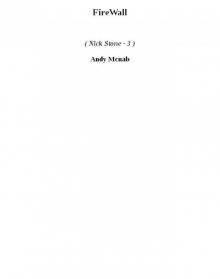 FireWall ns-3
FireWall ns-3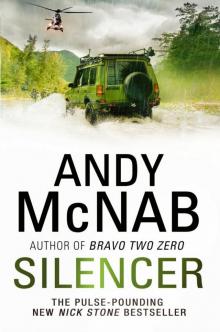 Silencer
Silencer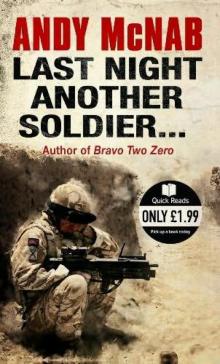 Last Night-Another Soldier…
Last Night-Another Soldier…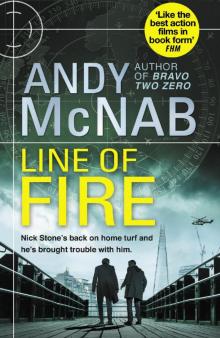 Line of Fire:
Line of Fire: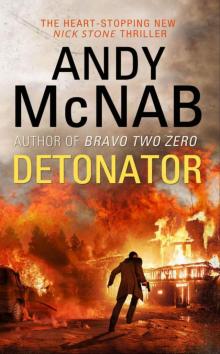 Detonator
Detonator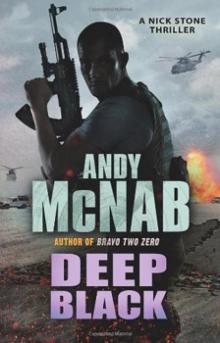 Deep Black ns-7
Deep Black ns-7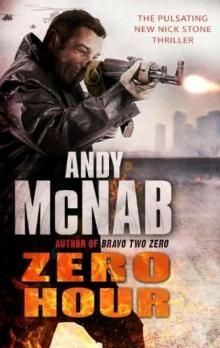 Zero Hour (2010) ns-13
Zero Hour (2010) ns-13 Brute Force ns-11
Brute Force ns-11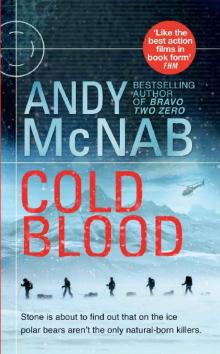 Cold Blood
Cold Blood Terminal Velocity
Terminal Velocity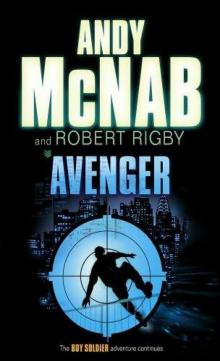 Avenger bs-3
Avenger bs-3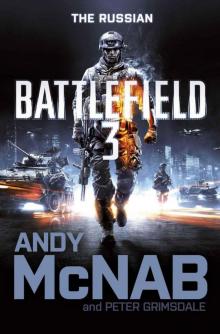 Battlefield 3: The Russian
Battlefield 3: The Russian DropZone
DropZone Zero Hour
Zero Hour NS13 Zero Hour (2010)
NS13 Zero Hour (2010)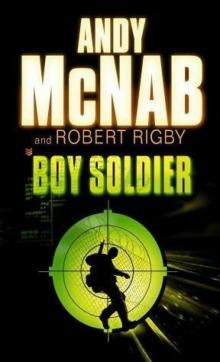 Boy soldier bs-1
Boy soldier bs-1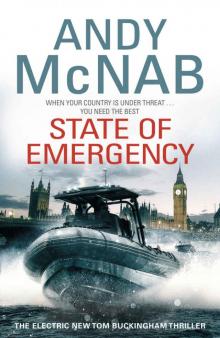 State Of Emergency: (Tom Buckingham Thriller 3)
State Of Emergency: (Tom Buckingham Thriller 3)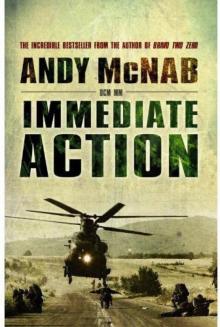 Immediate Action
Immediate Action The New Patrol
The New Patrol Crisis Four
Crisis Four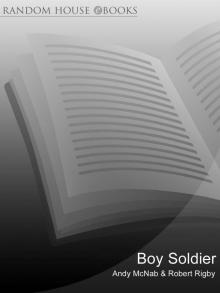 Boy Soldier
Boy Soldier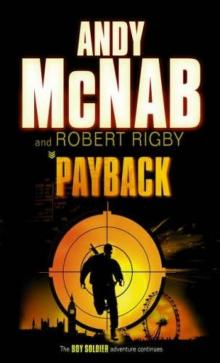 Payback bs-2
Payback bs-2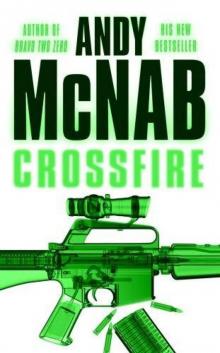 Crossfire ns-10
Crossfire ns-10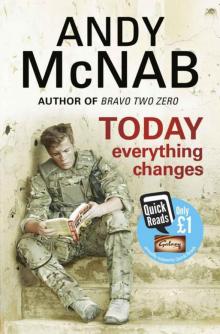 Today Everything Changes: Quick Read
Today Everything Changes: Quick Read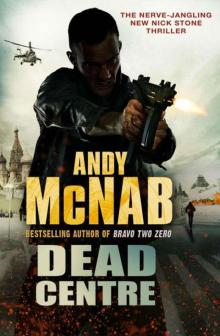 Dead Centre
Dead Centre For Valour
For Valour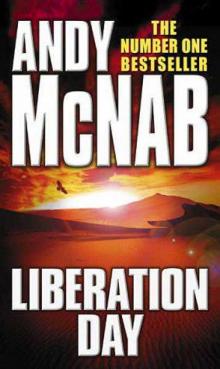 Liberation Day ns-5
Liberation Day ns-5 Aggressor ns-8
Aggressor ns-8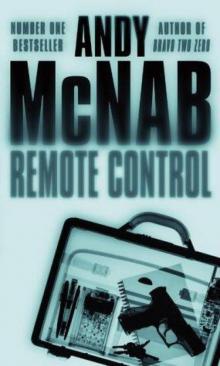 Remote Control ns-1
Remote Control ns-1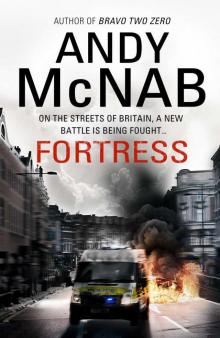 Fortress
Fortress On the Rock
On the Rock Dark Winter
Dark Winter